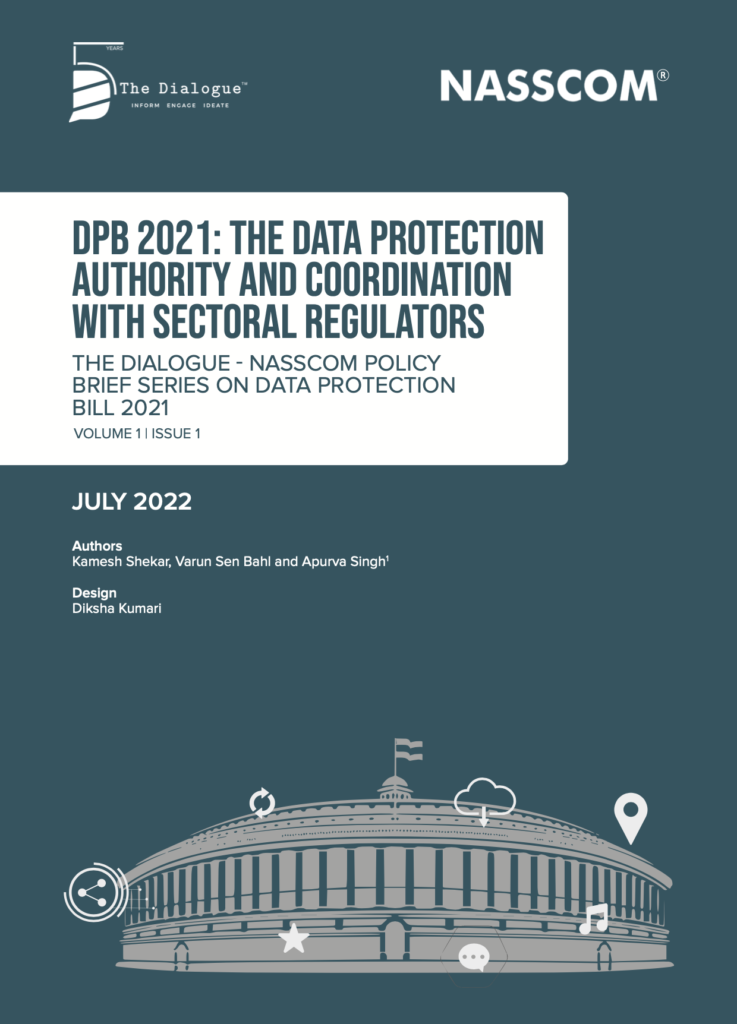About the series:
There have been three significant efforts to formulate a bill so far, with the most recent one being the (Draft) Data Protection Bill of 2021 (DPB 2021) proposed by the Joint Parliamentary Committee. For stakeholders like data fiduciaries, data processors, data principals and other policy actors, DPB 2021 currently serves as the base for deliberating upon what the final version should look like. There is merit, therefore, in examining its different components, identifying potential bottlenecks, and exploring ways to ease them. To this end, The Dialogue and NASSCOM have come together to author a series of policy briefs analysing specific aspects of the DPB 2021.
About Issue 1.0- DPB 2021: The Data Protection Authority And Coordination With Sectoral Regulators
As we are on the cusp of enacting India’s Data Protection regime, next in the pipeline is to establish the Data Protection Authority of India. Since technology cuts across multiple sectors, privacy and data protection are both vertical (across sectors) and horizontal (across the size of the business) in nature. This will be a challenging role for the DPAI as it will have to design and enforce standards aimed at realising a fundamental right across a wide range of contexts and sectors – essentially wherever the activities of collecting, using, handling, storing or disclosing personal data take place. A major aspect of this exercise will be contending with inter-regulatory harmonisation and coordination problems.
In this policy brief, we identified four specific challenges of inter-regulatory harmonisation and cooperation and discuss why they will arise, how they are presently being dealt with under the DPB 2021, and what gaps in the current approach are likely to arise and will need to be addressed going forward. The four challenges focused are (a) harmonising existing and proposed allied laws, (b) cooperating on jurisdictional overlaps and enforcement actions, (c) ensuring a uniform and holistic appreciation of new technologies and, (d) integrating grievance redressal mechanisms.
Click to read issue 1.0 here.
